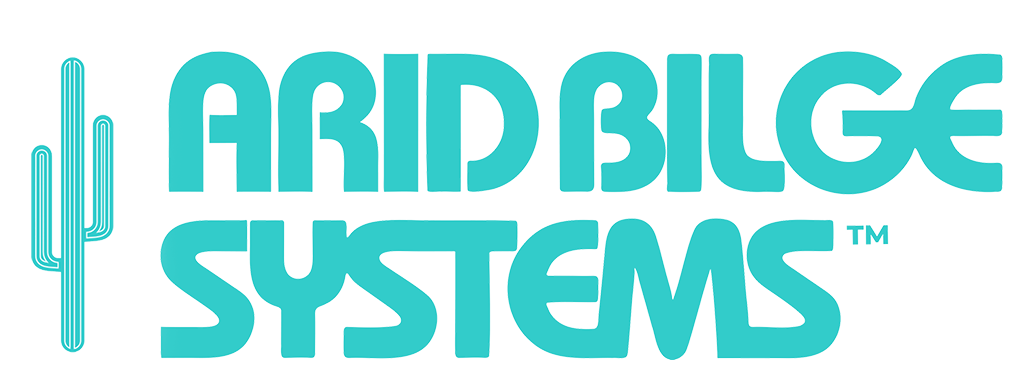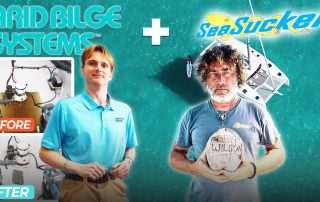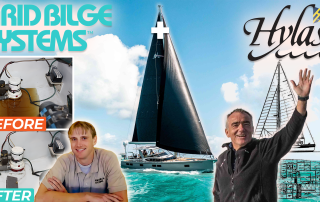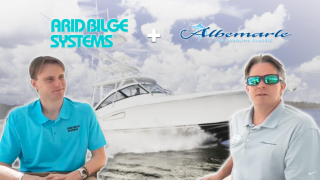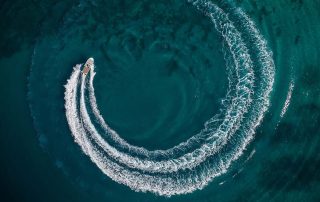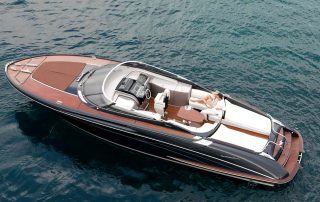Customer Success Story: Chuck Casagrande, Owner of Seasucker
Alfred Baurley of Arid Bilge Systems interviewed Chuck Casagrande at a recent boat show, and Chuck explained exactly why the Arid Bilge System is a game-changer aboard his 40-ft Catamaran. The system protects all his electrical systems and wiring by keeping them dry all the time. Between the electric and the odor, Chuck is enjoying his boat a lot more with the Arid Bilge System on board, and he can focus on the more fun parts of maintenance on this custom Cat.
See below for a transcript of the entire interview.
Alfred: Chuck Casagrande. He’s given us a testimonial review about the Arid Bilge System on his personal boat. He sells thousands of Seasuckers, and I wanna hear from him directly. What was your experience like?
Chuck: It was good. We’ve been working with you probably 4 or 5 years. And we put that system in, and that was great. It’s a big difference. I have a big boat. I have a 40-foot Catamaran. It was an older boat that we bought and we redid. And initially, we had some problems with the tank. We had moisture issues down below. It was water everywhere, even fuel for a while. Keeps it dry. We’ve got pucks in the back, and we’ve got pucks in the front. Since we have a Catamaran, you’ve got separate system on both sides. So the tubes will run over to the other pontoons forward and backwards. So it’s a pretty big system, and it works beautiful.
Alfred: First of all, you have a series 4, how many zones on that?
Chuck: But there’s, like, 4 something. I’m not technical on the actual product, but it works. It’s great.
Chuck: [At Seasucker] we’ve got a full machine shop, injection molding, tons of engineers. So I got an older boat, and we built it up from scratch, and a lot of custom stuff on there, but they really helped us fix that part of it.
Alfred: What do you mean by you have your engineers work on the boat directly?
Chuck: Well, I also have the engineers. I drag them in from Seasucker sometimes to the boat. So people laugh about a little bit. Sometimes it’s a Chuck’s boat day. Some special work on the boat together. We put a diving board on the boat. We’ve got a full de-sal system, 500 pounds of ice a day. It’s got a bathroom, sleeps 4. We’ve added all these things to it, so engineers are engaged here and there to make it work.
Alfred: Right. So did you experience any sort of humidity? That happens on Catamarans in the first place. Did you experience any odor?
Chuck: We had a ton. I mean, like I said, we had a fuel issue. So we had a big smell with the tank leaking. We had to replace the tank. But besides that, the boat still had water down there, which I didn’t like. When you have that moisture just sitting down there with all the hatches closed, you’ll see a film of moisture on all the electronics, on all the wires. Everything corrodes quicker then, so then you’re replacing stuff every year or two. With this system, everything stays dry down there. If I see it’s dry, I know my wires, my connections, everything’s gonna last a long time, and that’s what this system helps you do.
Chuck is excited about Arid Bilge Systems because of how it supports the longevity of all the other onboard systems. Arid Bilge Systems is here to support you in your boating journey, and customer satisfaction is our utmost goal.
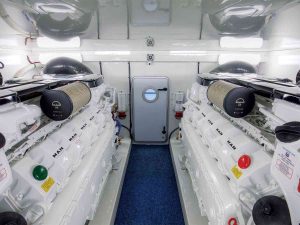
Keeping the engine room dry and tidy will help maintain all components
Check out Seasucker’s Marine line of products. And we’d like to note that their “About Us” page sounds pretty familiar to us at Arid Bilge Systems… we’re also a family company based in Florida, we have been producing all our marine products right here since the mid-2000’s, and we keep delivering innovative and carefully engineered products to market.
Check out this 2019 article on Seasucker’s work bringing manufacturing jobs back to the U.S., their family business operations, and their roots in Florida: Made in America: Bradenton’s SeaSucker makes all its bike racks, marine accessories in US
See Chuck Casagrande on LinkedIn
